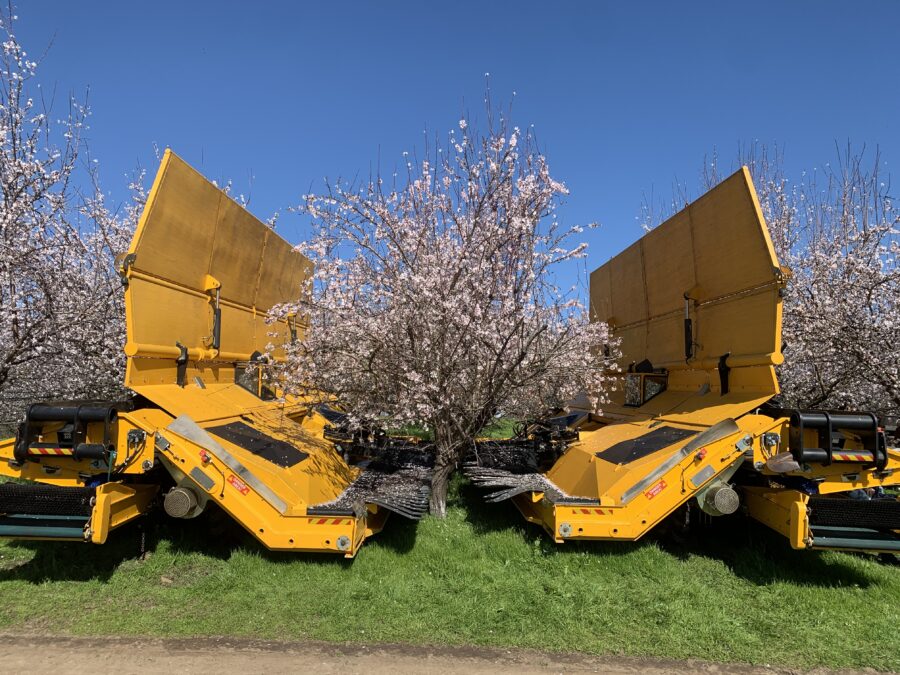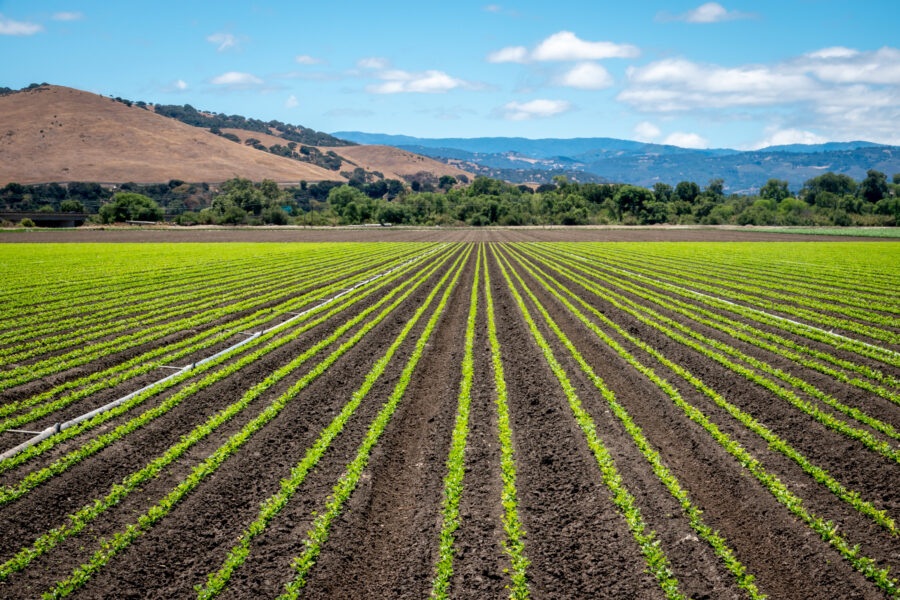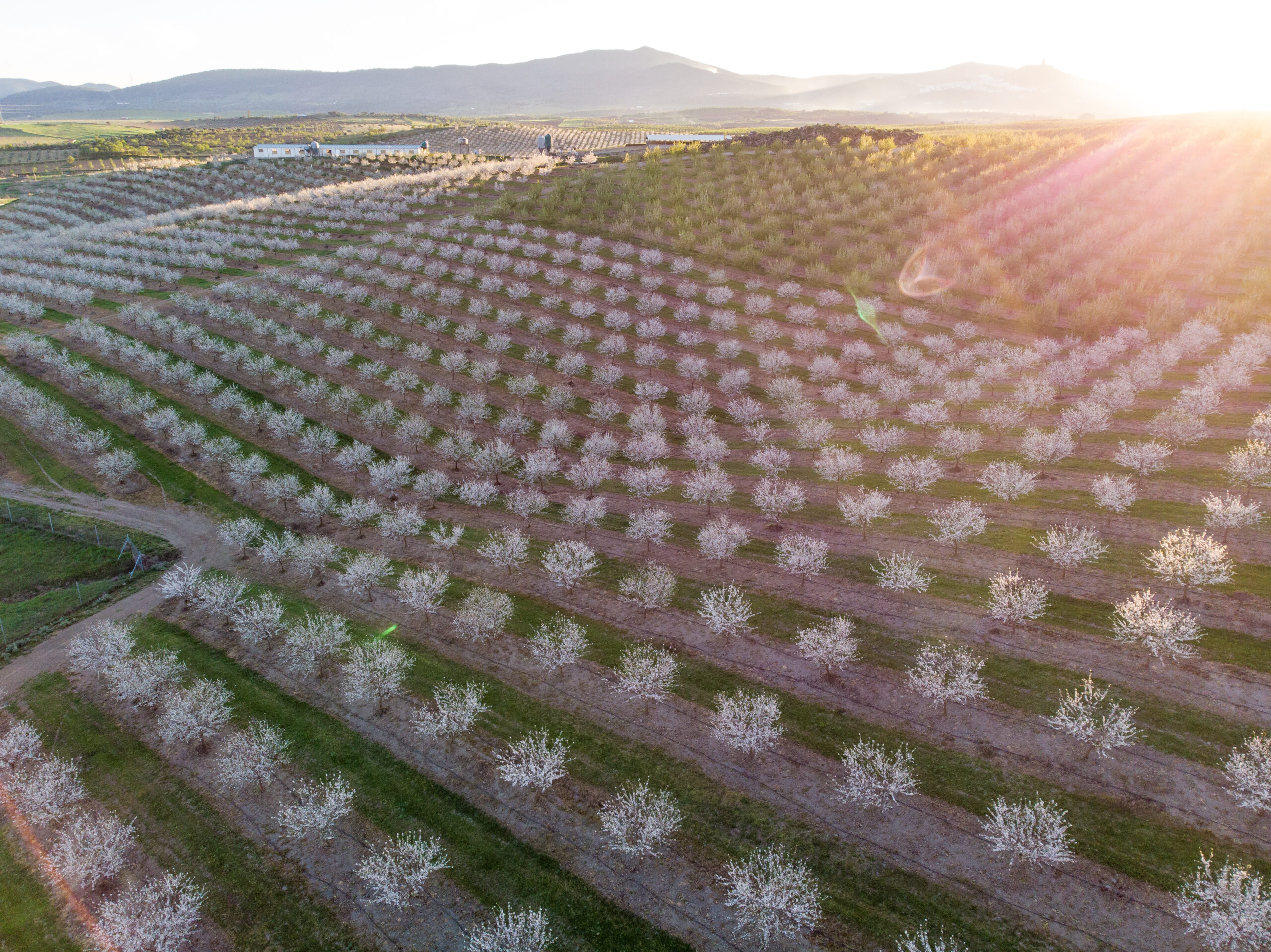
This May, an authorship group of 30+ members and 15+ organizations across private, public, nonprofit, and academic sectors published a report entitled “Cover Cropping in the SGMA Era.” Coordinated by Sustainable Conservation’s Solutions in our Soil team, the report was the culmination of a convening series and months of meticulous research, interviews, and writing — all in the pursuit of a better collective understanding of the water impacts of, and policy implications for, cover crop practices in California.
Why Cover Crops?
Our Solutions in Our Soil team focuses on the direct but often overlooked relationship between soil health and water conservation. The team’s recent work on expanding cover crop adoption is largely due to the practice’s potential to improve soil health and provide several key water-related benefits.
The report is a vital steppingstone for Sustainable Conservation’s work to increase California’s soil health to benefit the crops that grow out of it, the water that flows through it, and the people that depend on it.
What are cover crops?
Cover crops are non-income-generating crops that are used to protect and improve the soil between regular annual crop production (such as tomatoes), or between rows of perennial tree and vine crops. Cover cropping provides many diverse benefits which are increasingly important in California, including reducing erosion (and the harmful dust it produces), increasing carbon storage and infiltration of water into the soil, improving habitat and soil biodiversity, and more.
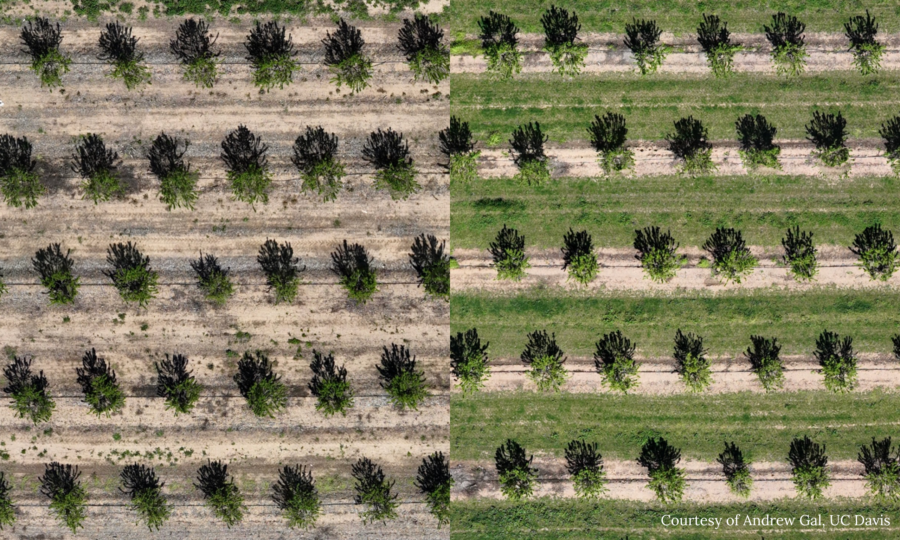
Above is a comparison of an orchard without cover crops (left) and with cover crops (right).
Sustainable Conservation’s involvement with this most recent report began with our 2023 report: Collaborative Solutions for California’s Climate-Resilient Agriculture: Harnessing the Water-Related Benefits of Soil. That report centered around interviews conducted by the team with growers and water managers about the barriers to adopting soil health practices — particularly those that benefit water quality and/or quantity.
Our team uncovered a lot of uncertainty and misperceptions related to cover crops’ perceived water impacts. These uncertainties exist both in terms of the actual water impact of cover crops and how their water use is accounted for under the Sustainable Groundwater Management Act (SGMA).
The 2014 regulatory framework created under SGMA authorizes local agencies, Groundwater Sustainability Agencies (GSAs), to account for and regulate the use of groundwater to avoid the negative impacts of aquifer overdraft. Under SGMA, GSAs have enormously complex mandates, but little guidance or resources to achieve them. In the state’s most arid basins they must account for the groundwater use of all crops, including cover crops. So, besides the scientific insights needed to calculate the true water impacts of cover crops, questions also remained about how exactly GSAs were currently measuring the net water use of these crops and if these approaches could be improved.
Convening the Experts
To better understand the uncertainty around cover crop water impacts and accounting, we hosted expert convenings to assess what we collectively know — and what we don’t. Along with several partner institutions (see logos below), we brought together researchers, conservation agencies, growers, agriculture industry professionals, and others with important information to share from the ground in the Central Valley.
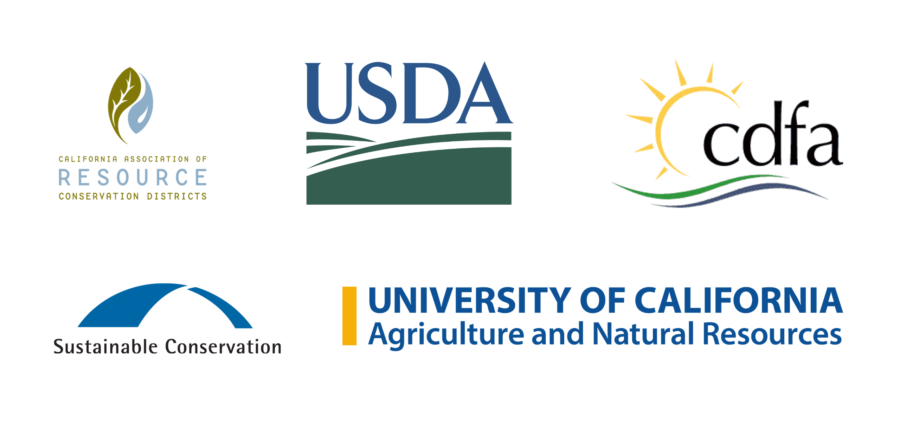
List of major partners in the development of this May’s “Cover Cropping in the SGMA Era” report.
Our peers shared empirical and anecdotal evidence that suggests cover cropping can retain soil moisture, increase water infiltration and storage, improve pollinator habitat, sequester carbon and decrease water runoff and soil erosion among other soil and cash crop benefits. It became clear that there was a real need for a comprehensive, evidence-based report that defines and quantifies these relationships.

The Report
In co-developing this report, we kept what we had learned from grower interviews and our convenings top of mind. Most importantly, partners consistently expressed that the perceived water use and concerns about its measurement under the SGMA framework is the single largest barrier that discourages cover crop implementation.
Thus, the “Cover Cropping in the SGMA Era” report assembled the most pertinent published and emerging research on water impacts — and water benefits — associated with cover crops and analyzed the ways groundwater regulation might affect them. The ultimate goal was to better understand if and how cover crops could be adopted across the Central Valley under the current SGMA framework.
View the “Cover Cropping in the SGMA Era” Executive Summary and Full Report
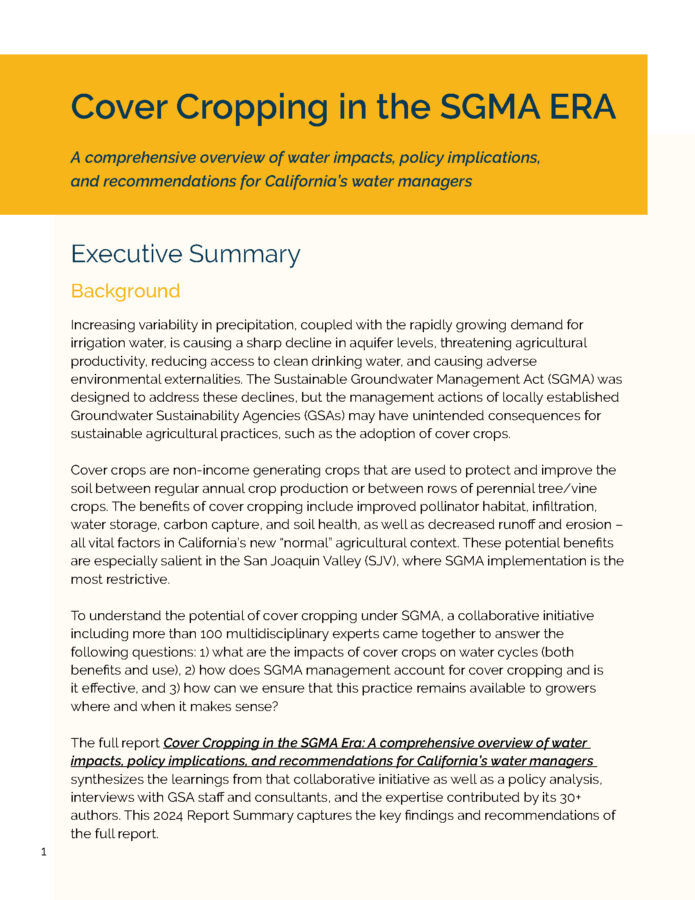
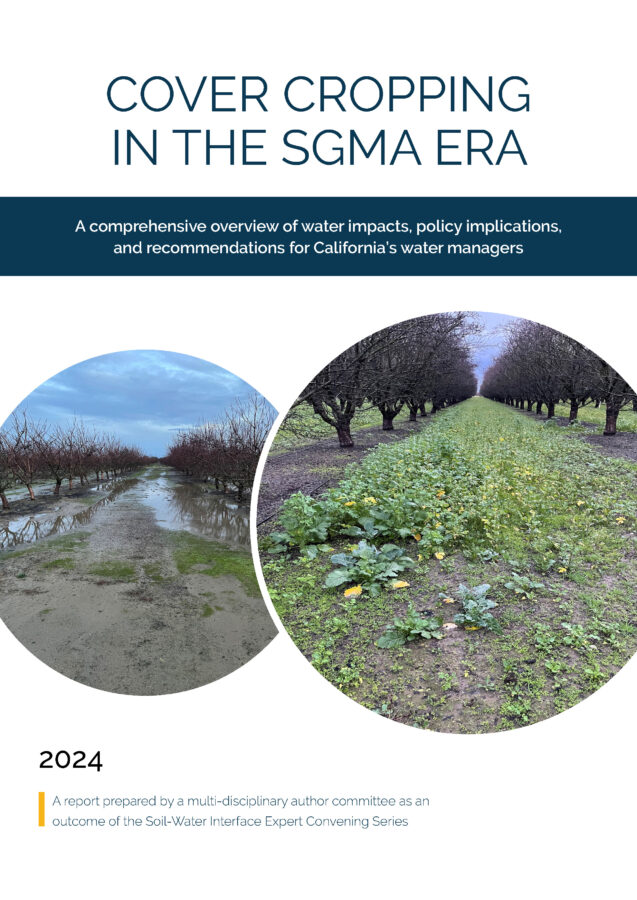
Sustainable Conservation’s Solution in our Soil team couldn’t be more thrilled with the culmination of the collaborative authorship process. The cover crop convenings and subsequent report laid the foundations for a collective knowledge base around water-smart cover cropping from which technical guidance, incentives, additional research, and informed policy can be made. Beyond the report itself, a series of recommendations for vital next steps and a well-connected, energized community pursuing them have emerged out of these processes.
This report was made possible by the shared wisdom of the scientists, researchers, growers, and other agricultural experts who have long been stewarding our state’s soils. We are incredibly grateful for the relationships we made and strengthened in the soil health landscape through this process, and we hope the report findings can lift up the soil-water nexus as a critical area for future work and investments. We would like to extend our deepest thanks and appreciation to all the individuals and groups that volunteered their time contributing to the cover crop convenings or bringing their expertise, knowledge, and sustained patience to the report’s months-long drafting process.
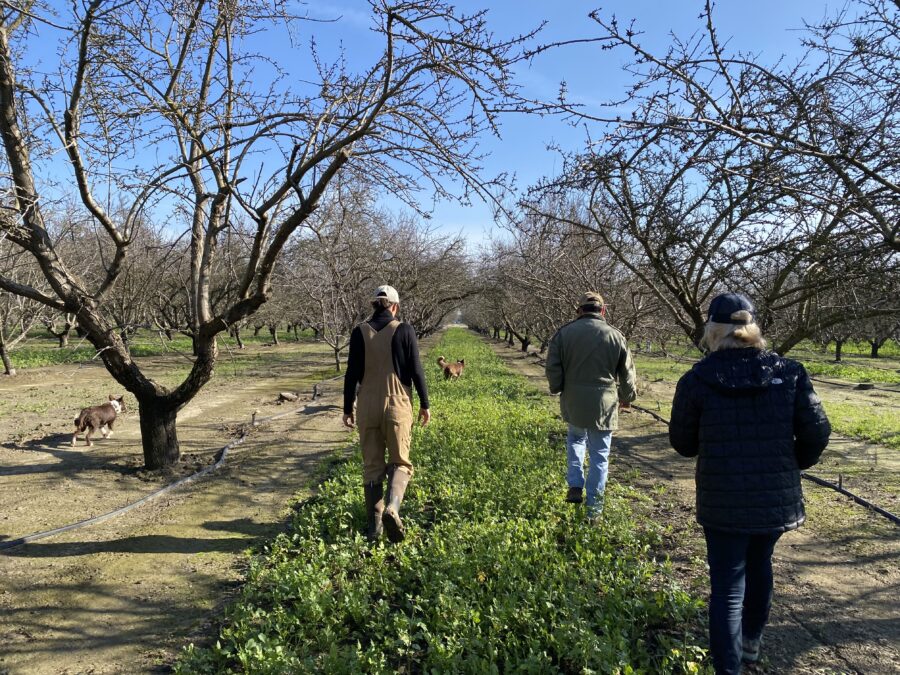
Cover crops on Christine Gemperle’s Turlock orchards
Moving Forward
Sustainable Conservation has long been defined by our water conservation work, and our organizational investment in the health of our state’s working soils hinges on the cascading benefits healthy soils present to water quality, water quantity, and beyond.
The convenings and report process embodies Sustainable Conservation’s philosophy of robust partnerships and collaboration to catalyze lasting solutions. Looking ahead, the Solutions in our Soil team is helping to coordinate and secure funding for research on the most important remaining questions around cover crops’ water impacts. The team will also strive to enable support for GSAs to ensure they have the information necessary to consider cover crops’ water benefits, and work with individual GSAs and partners to pilot approaches that incorporate cover crops’ true water impacts in water accounting.
Our interviews and research revealed how providing GSAs with clear, actionable information can enable more accurate accounting of cover crops’ water impacts — and the broader water flows in their basins. We believe these efforts will help ensure cover crops remain viable as a multi-benefit solution for jointly conserving soil and water resources to increase the Central Valley’s environmental and economic resilience.
Please reach out to soils@suscon.org with any inquiries around cover crops, the report and our follow-up, or the soil health program at Sustainable Conservation.
Previous Soil Health Blogs from Sustainable Conservation

